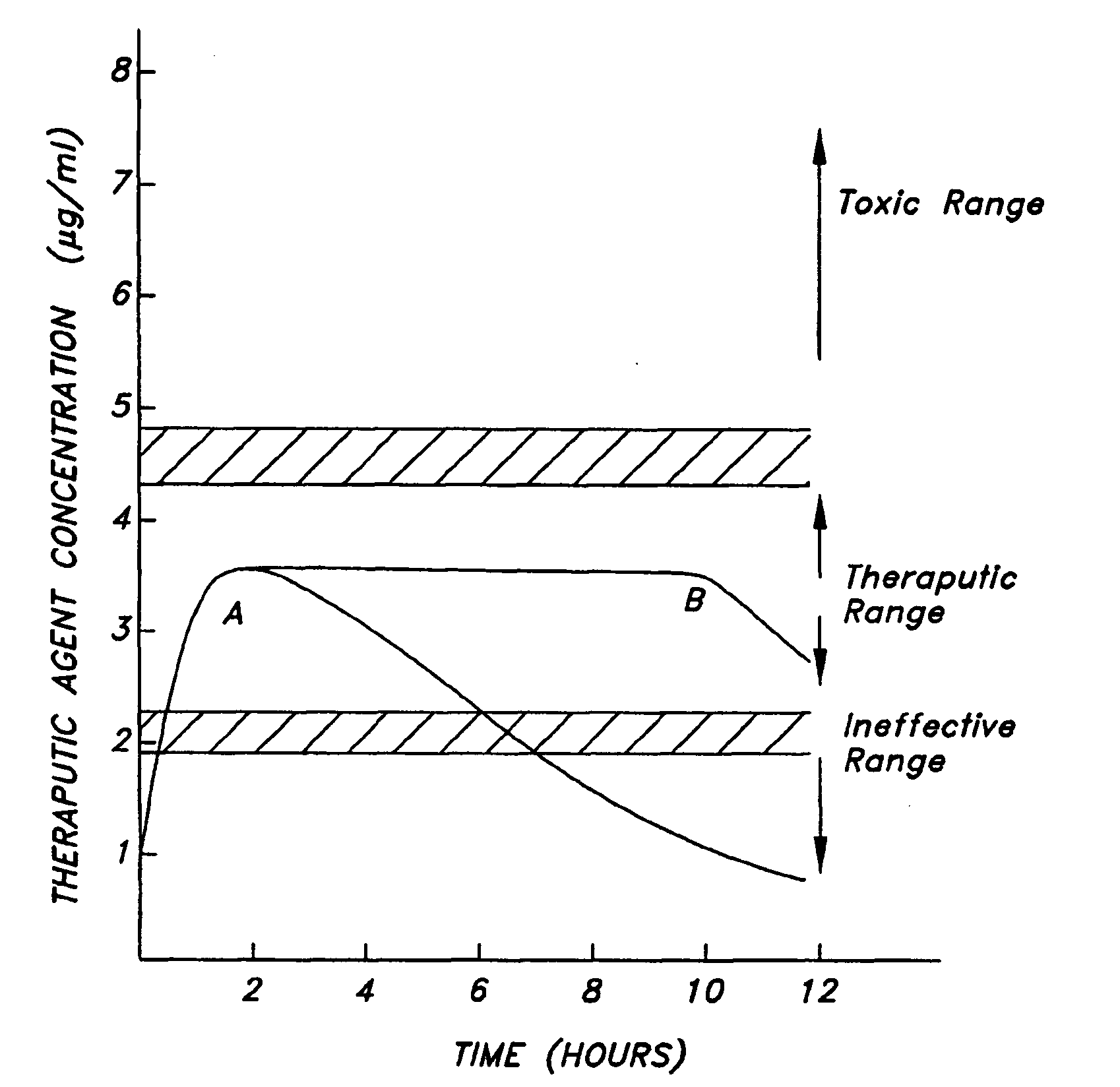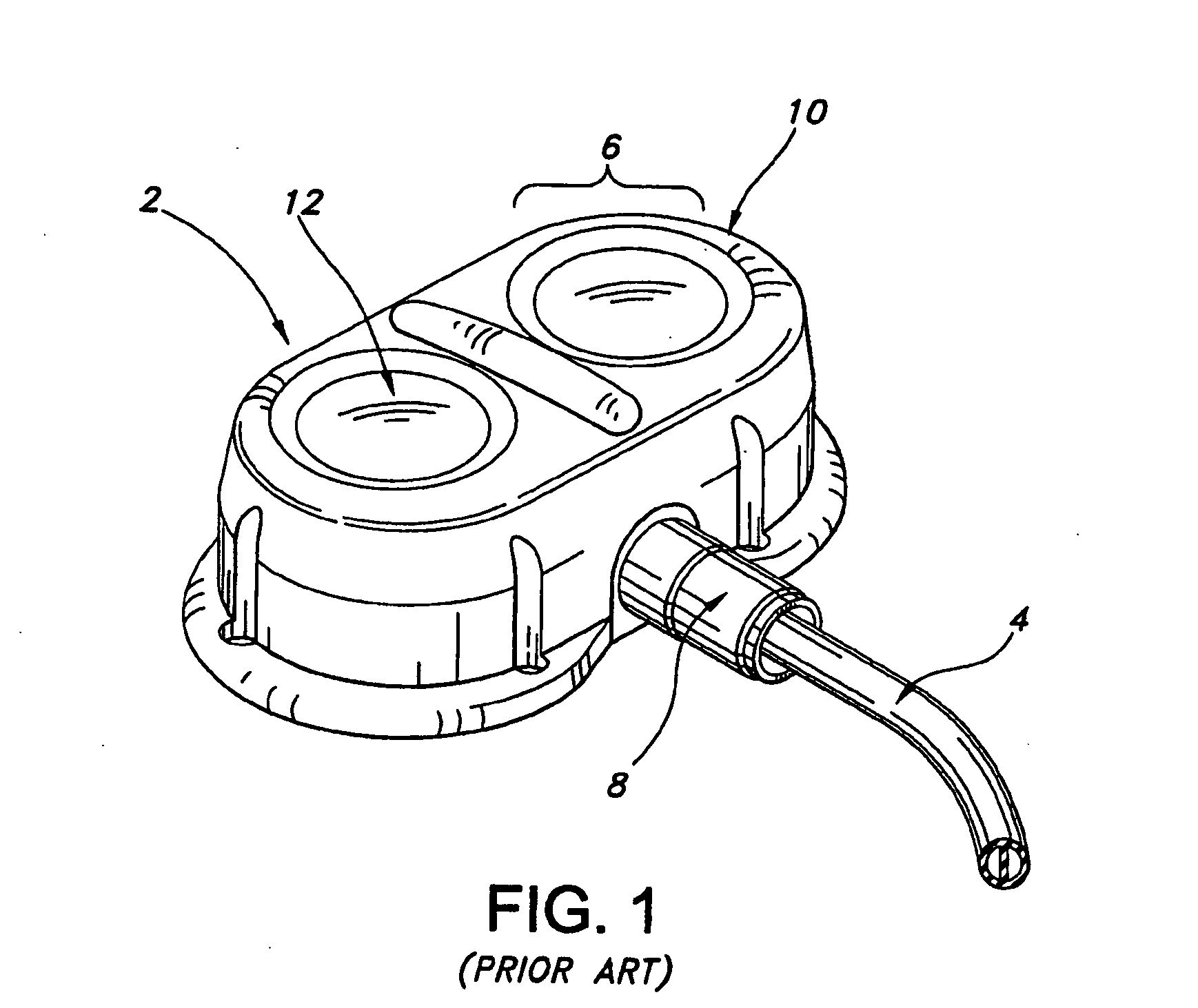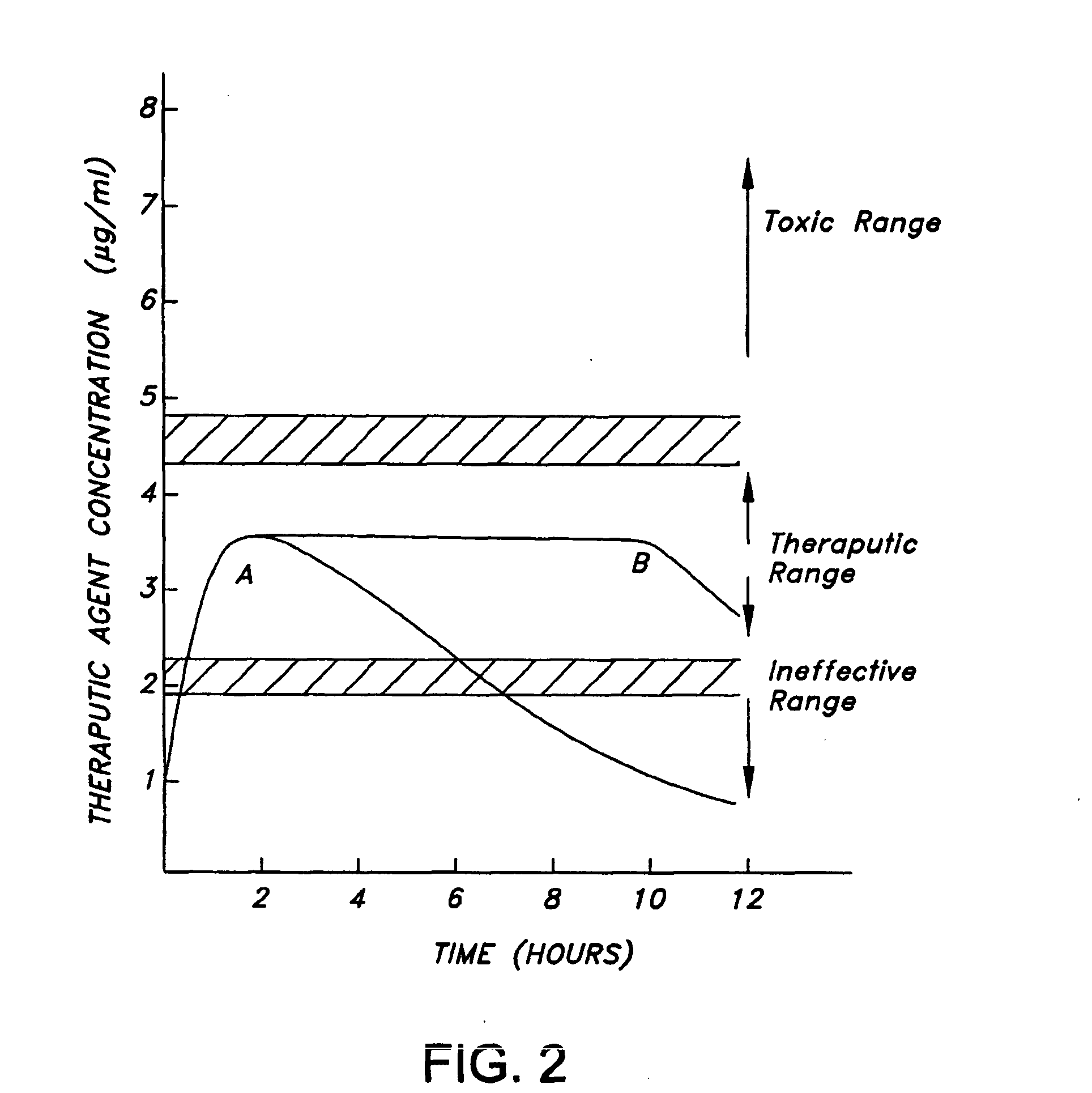Ultrasound-activated anti-infective coatings and devices made thereof
a technology of anti-infection coating and ultrasonic activation, which is applied in the direction of catheters, food packaging, therapy, etc., can solve the problems of port removal, increased infection risk, and use of cvads
- Summary
- Abstract
- Description
- Claims
- Application Information
AI Technical Summary
Benefits of technology
Problems solved by technology
Method used
Image
Examples
example 1
Ultrasound Activatable Micelles
[0124] This example describes a coating made with a cross-linked polymeric material formed into micelles loaded with therapeutic agent that will release the agent upon exposure to ultrasound energy. An amphiphylic alternating copolymer consisting of poly(ethyleneglycol) and poly(L-lactic acid) as shown below is used to form micelles. The polymeric micelles are further stabilized by polymerization using N,N-diethylacrylamide in a poly(L-lactic acid) inner core of the micelles. The micelles are further optimized by reaction of acetylated hydroxyalkyl carboxylic acid derivatives to add functional groups, such as —COOH, SO4, H, NH or the like, as attachment sites for the therapeutic agent.
[0125] The hydrophilic / hydrophobic copolymer is dissolved in methylene chloride and emulsified with a 5% aqueous solution of albumin containing an antibiotic and / or a thrombogenic agent by sonicating for 2 minutes, and spray-drying to produce particles (10 μm). The mic...
example 2
Ultrasound Activatable Micelles
[0126] This example describes a coating made with a cross-linked polymeric material which forms micelles loaded with therapeutic agent that will release the agent upon exposure to ultrasound energy. Poly(ethylene oxide glycol) / poly(propylene oxide glycol) copolymers and poly(Ε-capriolactone) are used to form a block polymer as shown below.
The core of this polymeric micelle is stabilized by forming an interpenetrating cross-linked system using N,N,diethylacrylamide as a cross-linking agent. The therapeutic agent is incorporated into the micelle as described above. The micelle is dried and used directly as a coating on a medical device substrate or is dried and applied onto a polymeric coating on the substrate.
example 3
Ultrasound Activatable Micelles
[0127] This example describes a coating made with a cross-linked polymeric material which forms micelles loaded with therapeutic agent that will release the agent upon exposure to ultrasound energy. A commercially available poly(ethylene / glycol)-poly(propylene glycol) triblock copolymer (PEO-PPO-PEO), as shown below is used to make the polymeric material of the coating. The copolymer is optionally cross-linked to form an interpenetrating network.
To a commercial polymer, (PLURONIC 105 or PLURONIC 127, available from BASF Corp., Ludwigshafen, Germany) is added N,N-diethylacrylamide to stabilize the hydrophobic core of the micelle. The therapeutic agent is incorporated into the micelle as described above. The micelles are dried and used directly as a coating on a medical device substrate or are dried and appied onto a polymeric coating on the substrate.
PUM
| Property | Measurement | Unit |
|---|---|---|
| wavelength range | aaaaa | aaaaa |
| time | aaaaa | aaaaa |
| pore size | aaaaa | aaaaa |
Abstract
Description
Claims
Application Information
 Login to View More
Login to View More - R&D
- Intellectual Property
- Life Sciences
- Materials
- Tech Scout
- Unparalleled Data Quality
- Higher Quality Content
- 60% Fewer Hallucinations
Browse by: Latest US Patents, China's latest patents, Technical Efficacy Thesaurus, Application Domain, Technology Topic, Popular Technical Reports.
© 2025 PatSnap. All rights reserved.Legal|Privacy policy|Modern Slavery Act Transparency Statement|Sitemap|About US| Contact US: help@patsnap.com



